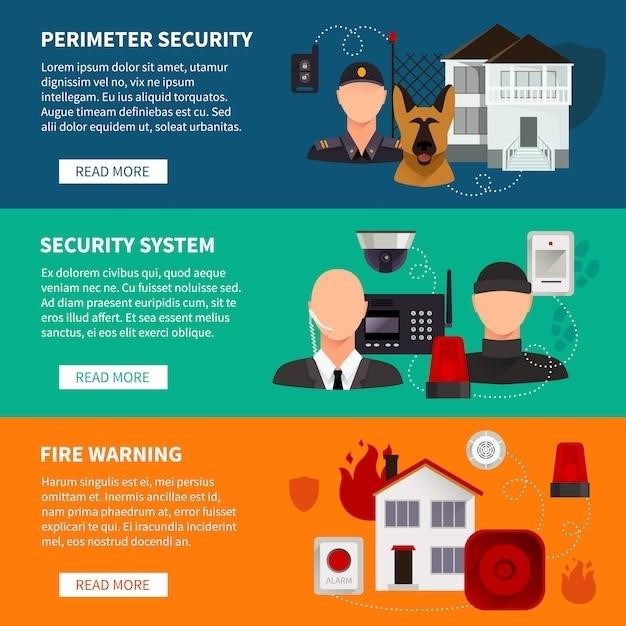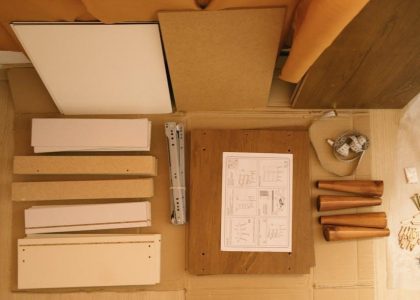First Alert 9120B Hardwired Smoke Alarm
The First Alert 9120B Hardwired Smoke Alarm is a reliable and essential safety device for your home․ It provides early warning of fire, giving you precious time to evacuate and stay safe․ This user manual contains important information about your Smoke Alarms operation and how to ensure it functions correctly․
Introduction
Welcome to the First Alert 9120B Hardwired Smoke Alarm with Battery Backup․ This user manual is designed to help you understand the features, installation, operation, and maintenance of your new smoke alarm․ It’s crucial to read this manual thoroughly before installing and using the alarm to ensure its proper functionality and your safety․ The First Alert 9120B utilizes an ionization smoke sensor, which is particularly effective at detecting fast-burning fires that produce a lot of smoke particles․ This smoke alarm is designed to provide early warning of fire, giving you ample time to evacuate your home safely․ The alarm is powered by your home’s electrical wiring, offering continuous operation․ However, it also includes a battery backup, ensuring uninterrupted protection even during power outages․
Basic Safety Information
Before installing and using your First Alert 9120B Hardwired Smoke Alarm, it’s crucial to understand the following safety information⁚
- Install Smoke Alarms on Every Level of Your Home⁚ Install smoke alarms on every level of your home, including the basement and attic․ Place them in bedrooms, hallways, and living areas․
- Keep Smoke Alarms Clean⁚ Dust, dirt, or cobwebs can interfere with the alarm’s operation․ Clean the alarm regularly as per the instructions in this manual․
- Test Smoke Alarms Monthly⁚ Test the alarm monthly by pressing the test button to ensure it’s functioning properly․
- Replace Batteries Regularly⁚ Replace the battery backup in the smoke alarm every six months, even if the alarm still operates․
- Replace Smoke Alarms Every 10 Years⁚ Smoke alarms have a limited lifespan․ Replace your smoke alarm every 10 years, regardless of its age or condition․
- Avoid Painting Smoke Alarms⁚ Painting the alarm can hinder its ability to detect smoke․
- Install Smoke Alarms Properly⁚ Follow the installation instructions provided in this manual to ensure proper placement and wiring․
- Never Disable or Remove Smoke Alarms⁚ Always keep smoke alarms operational and never disable or remove them without proper reason․
By adhering to these safety guidelines, you can maximize the effectiveness of your smoke alarm and ensure the safety of your family․
Installation
The First Alert 9120B Hardwired Smoke Alarm requires careful installation for optimal performance․ Here’s a step-by-step guide to ensure a secure and effective setup⁚

- Choose the Right Location⁚ Select a location on the ceiling or wall, at least 4 inches away from any obstructions like light fixtures or vents․ Avoid areas with high humidity or temperatures․
- Prepare the Wiring⁚ Locate the existing wiring for your home’s electrical system; The alarm requires a standard 120V AC power supply․
- Connect the Wires⁚ Connect the wires from the alarm to the corresponding wires in your home’s electrical system․ Ensure a secure connection by twisting the wires together and using wire nuts․
- Mount the Alarm⁚ Mount the alarm firmly to the ceiling or wall using the included screws and anchors․
- Install the Battery Backup⁚ Insert the 9-volt battery into the battery compartment, ensuring it’s properly seated․ The battery backup provides power during power outages․
- Test the Alarm⁚ After installation, test the alarm by pressing the test button․ The alarm should sound, indicating it’s functioning correctly․
For detailed instructions and diagrams, refer to the installation guide included with your First Alert 9120B Hardwired Smoke Alarm․ If you’re unsure about any aspect of the installation, consult a qualified electrician․
How to Install This Alarm
Installing your First Alert 9120B Hardwired Smoke Alarm is a straightforward process․ Ensure you have the necessary tools and follow these steps carefully⁚
- Locate the Wiring⁚ Identify the existing wiring for your home’s electrical system․ The alarm requires a standard 120V AC power supply․
- Disconnect Power⁚ Before working with any electrical wiring, turn off the power to the circuit at the breaker box․ This is crucial for safety․
- Connect the Wires⁚ Connect the wires from the alarm to the corresponding wires in your home’s electrical system․ Ensure a secure connection by twisting the wires together and using wire nuts․
- Mount the Alarm⁚ Mount the alarm firmly to the ceiling or wall using the included screws and anchors․ Ensure it is securely in place․
- Install the Battery Backup⁚ Insert the 9-volt battery into the battery compartment, ensuring it’s properly seated․ The battery backup provides power during power outages․
- Reconnect Power⁚ After completing the wiring, turn the power back on at the breaker box․
- Test the Alarm⁚ After installation, test the alarm by pressing the test button․ The alarm should sound, indicating it’s functioning correctly․
Always consult the installation guide included with your First Alert 9120B Hardwired Smoke Alarm for detailed instructions and diagrams․ If you’re unsure about any aspect of the installation, consult a qualified electrician․
Regular Maintenance
Regular maintenance is essential to ensure your First Alert 9120B Hardwired Smoke Alarm functions correctly and provides reliable protection․ Here’s what you need to do⁚
- Monthly Testing⁚ Test the alarm every month by pressing the test button․ This ensures the alarm is operational and the sound is audible․
- Battery Replacement⁚ Replace the 9-volt battery every six months, even if the alarm doesn’t indicate low battery․ The battery provides backup power in case of a power outage․
- Dusting and Cleaning⁚ Dust the alarm regularly to prevent accumulation of debris that can interfere with its operation․ Use a soft brush or a damp cloth to clean the alarm․
- Avoid Painting⁚ Don’t paint the alarm as it can affect its functionality․ If you must paint the ceiling or wall, cover the alarm with masking tape․
- End of Life Indicator⁚ The alarm has an end-of-life indicator․ When it reaches the end of its lifespan (approximately ten years), it will chirp five times every 30-40 seconds․ It’s time to replace the alarm at this point․
By following these simple maintenance steps, you’ll help ensure your First Alert 9120B Hardwired Smoke Alarm remains in optimal condition and provides reliable early warning of fire․
Regulatory Information for Smoke Alarms
The First Alert 9120B Hardwired Smoke Alarm is designed to meet or exceed applicable safety standards, ensuring it provides reliable protection for your home․ Understanding relevant regulations is crucial for proper installation and maintenance․
The National Fire Protection Association (NFPA) sets the standards for smoke alarms, and many states have adopted these standards as law․ NFPA 101, “Life Safety Code,” requires that smoke alarms be installed in all bedrooms, outside each sleeping area, and on every level of the home, including basements․
Some states have specific requirements for ionization or photoelectric smoke alarms, or both․ Consult your local building codes or fire department for details on your area’s regulations․ Always follow the installation instructions provided with your alarm and local building codes for proper placement and operation․
Agency Placement Recommendations
For optimal fire safety, it’s essential to strategically place your smoke alarms according to agency recommendations․ The National Fire Protection Association (NFPA) and other safety organizations provide guidelines based on extensive research and real-world experience․
Here are some key placement recommendations⁚
- Every Level⁚ Install at least one smoke alarm on each level of your home, including the basement․
- Sleeping Areas⁚ Place smoke alarms inside every bedroom and outside each sleeping area, such as a hallway․
- High Traffic Areas⁚ Consider placing smoke alarms in frequently used areas, like kitchens and living rooms, where fires are more likely to start․
- Distance from Obstacles⁚ Maintain a minimum distance of 10 feet from any heating or cooling equipment․
- Ceiling or Wall Mount⁚ Smoke alarms can be mounted on the ceiling or high on a wall, ensuring they are in the path of smoke․
Remember, these are general guidelines․ Consult your local building codes or fire department for specific recommendations tailored to your region and home structure․

About Smoke Alarms
Smoke alarms are invaluable safety devices designed to alert you to the presence of smoke, a key indicator of a potential fire․ They play a crucial role in providing early warning, giving you precious time to escape a dangerous situation․
There are two main types of smoke alarms⁚ ionization and photoelectric․ Ionization smoke alarms are more sensitive to fast-burning fires, like those caused by paper or wood․ Photoelectric smoke alarms, on the other hand, are more sensitive to smoldering fires, like those caused by cooking oil or smoldering fabrics․
For maximum protection, consider having both types of smoke alarms installed in your home․ This will ensure that you are alerted to a wider range of fire situations, increasing your safety and peace of mind․
Regular testing and maintenance are essential to ensure your smoke alarms are functioning properly․ Replace batteries as recommended, and check the alarm’s functionality regularly․
Troubleshooting
While the First Alert 9120B Hardwired Smoke Alarm is designed for reliability, occasional issues may arise; If you encounter any problems, refer to the following troubleshooting steps⁚
Alarm Not Sounding During Testing⁚ If the alarm fails to sound during a test, ensure the battery compartment is not locked․ Install a new battery and retest․ If the alarm still doesn’t sound, replace it immediately․
Alarm Chirping⁚ Five consecutive chirps indicate the alarm is nearing the end of its lifespan (EOL)․ This typically occurs around five years after manufacture․ Replace the alarm․
Alarm Sounding Continuously⁚ If the alarm sounds continuously without a smoke source, investigate possible causes such as dust accumulation near the sensor or a nearby cooking incident․ Dust the sensor carefully with a vacuum cleaner or a soft brush․ If the alarm persists, consult the user manual for further troubleshooting steps or contact customer support․
Alarm Not Working After Power Outage⁚ If the alarm fails to function after a power outage, ensure the power supply is restored and the battery is properly installed․ If the issue persists, refer to the user manual or contact customer support․
Features of the First Alert 9120B
The First Alert 9120B Hardwired Smoke Alarm is designed with several features to enhance safety and ease of use․ These features include⁚
Hardwired Installation⁚ The alarm connects to your home’s electrical wiring, ensuring continuous power operation․ This eliminates the need for frequent battery replacements for the primary power source․
Battery Backup⁚ In case of a power outage, the alarm is equipped with a replaceable 9-volt battery to provide uninterrupted protection․ This battery should be replaced every six months to ensure it’s fully functional․
Ionization Smoke Sensor⁚ This sensor detects smoke from fast-burning fires, providing early warning of potential hazards․
Side Load Battery Drawer⁚ This convenient feature allows for easy battery replacement without removing the alarm from the ceiling or wall․
End-of-Life (EOL) Indicator⁚ The alarm emits five chirps to indicate it is nearing the end of its lifespan, usually around five years after manufacture․ This feature reminds you to replace the alarm for continued protection․
Battery Backup
The First Alert 9120B Hardwired Smoke Alarm features a battery backup system to ensure uninterrupted operation even in the event of a power outage․ The alarm is powered by your home’s electrical wiring, but the backup battery provides a crucial safety net in case of an electrical failure․
The battery backup is a 9-volt battery, and it is essential to replace it regularly to maintain the alarm’s effectiveness․ The recommended replacement interval is every six months․ This frequency ensures the battery has sufficient power to operate the alarm effectively during a power outage․
To replace the battery, simply locate the battery compartment on the alarm․ Open the compartment and insert a new 9-volt battery, ensuring the positive (+) and negative (-) terminals are aligned correctly․ Close the compartment securely to complete the process․
Remember, a functioning battery backup is critical for the alarm’s reliable performance during a power outage․ Regular battery replacement is a crucial step in ensuring your home’s safety․
Testing and Resetting
Regularly testing your First Alert 9120B Hardwired Smoke Alarm is essential to ensure its proper functionality and provide peace of mind․ You should test the alarm at least once a month to verify its ability to sound an alert in the event of a fire․
To test the alarm, locate the test button on the device․ Press and hold the test button until the alarm sounds․ You should hear a series of beeps, indicating the alarm is functioning correctly․ If you do not hear the alarm sound, check the battery and ensure it is properly installed․ If the alarm still does not sound, it may need to be replaced․
After testing, the alarm will need to be reset․ This ensures the alarm is ready to detect actual smoke․ To reset the alarm, simply release the test button․ The alarm should silence after a few seconds․ If the alarm continues to sound, check the battery and ensure it is properly installed․ If the alarm persists, it may require replacement․
Remember, regular testing and resetting are essential for keeping your smoke alarm functioning properly and ensuring it is ready to provide crucial fire safety protection for your home․





